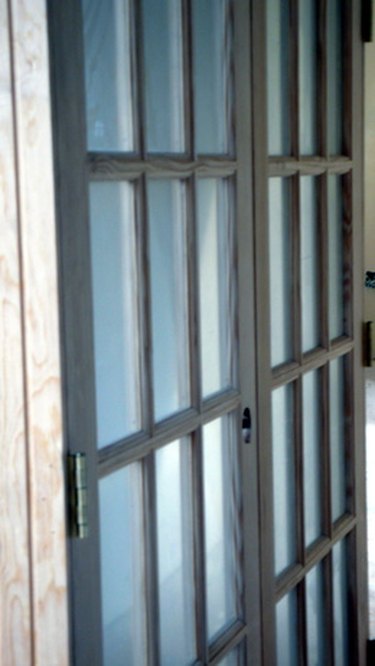
Most sliding glass doors, stair landing windows, bathroom windows and tub and shower doors contain tempered glass. Manufacturers design this glass to withstand wind, heat and impacts better than annealed glass, or glass that they have not exposed to special heat treatments. Tempered glass breaks into very small pieces and is safer than annealed glass which breaks into large chunks. Window cleaning techniques are sometimes to blame for scratches that may appear on tempered glass. However, this glass can also become defective during the manufacturing process when tiny glass chips and particles, called fabricating debris, fuse to its surface and cause scratches when using otherwise safe cleaning methods. You can tell if tempered glass is defective by looking out for a few specific signs.
Step 1
Use a bright light to identify any scratches that are on the surfaces of the tempered glass pane. Use a magnifier to get an up-close look at the location and appearance of these scratches. These can very well be signs of defective tempered glass.
Video of the Day
Step 2
Look at the location of the scratches on the tempered glass. Low quality or defective tempered glass often has widespread scratches that cover the entire surface of the pane. Fabricating debris is often to blame for the fine, numerous scratches found on defective tempered glass.
Step 3
Take note of whether the scratches occur on both sides of the pane or only on one side. Defective tempered glass usually has scratches specifically on the side of the glass that came in contact with the rollers during the heating process in the tempering furnace, or the roller side.
Step 4
Figure out which side of the glass is actually the roller side, the potentially defective side. Look at the tempering stamp, put in place by the manufacturing company, to make a determination. Sand-blasted stamps appear on the roller side of the glass, while porcelain stamps are on the other side, which is the quality surface.
Step 5
Differentiate between a sand-blasted stamp and a porcelain stamp on a piece of tempered glass by passing a razor blade over the surface of the stamp. If the razor passes smoothly over the stamp, it is sand-blasted. If there is drag when the razor passes over, it is a porcelain stamp.
Tip
tempered
Video of the Day